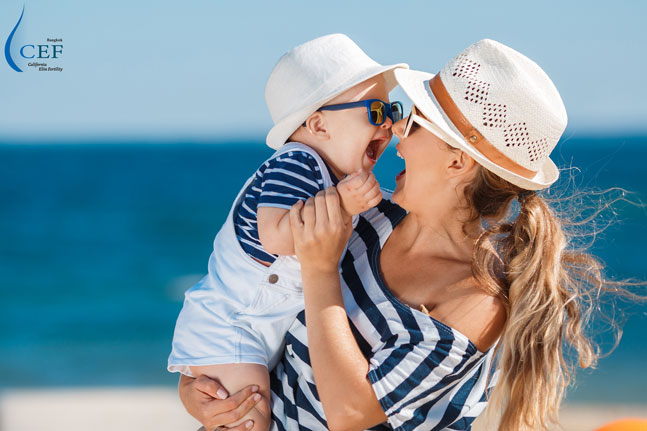CEF Bangkok Academic Lecture: Assessment of Female Infertility (I)
Infertility is a complicated disease associated with fertility disorders in both men and women. The accurate diagnosis and evaluation of the disease is the most important basis to treat it. The diagnosis and treatment protocol for infertility should take those factors into account including age, duration of infertility, etioloty, convenience for medical visits, cost and other factors. In particular, it’s important to determine the diagnosis and treatment process based on the significance and logical rationality of each examination.

1、Age of the Infertile Couple
The best childbearing age is 20 to 30. Specifically in women, there are about one million primordial follicles in the ovaries at birth, which decreases to 400,000 at the time of puberty. At the age of 15 to 45, the follicles in the ovaries will continue to grow, with about 400 to 500 follicles growing to maturity during the 30 years while other follicles become atresic or vestigial. Starting from the age of 35, the number of follicles in the ovary decreases gradually and the quality of oocytes also deteriorates along with time. At the age of 45, women are almost at the end of their fertility. Therefore, female infertility is highly correlated to age. In infertility consultation, diagnosis and treatment, the age of the female patient should be the prime factors to be considered. Generally, the age of female infertility is divided into three stages:
① For women who are in their thirties without an absolute cause of infertility, they should be able to improve their lifestyle to enhance the chance of getting pregnant if their ovarian reserve function is normal and hasn’t been infertile for a long time; ②For women over 35, they may visit the fertility clinic for a simple consultation and tests such as antral follicle count via vaginal ultrasound and semen analysis for their partner if they haven’t achieved a pregnancy after trying to conceive for half a year; ③For women who are in their forties and have infertility issues, they are recommended to complete an ovarian function test and resort to in intro fertilization to achieve a pregnancy.
2、Duration of Infertility
The ability that a couple gets pregnant during a unit (normally a menstrual cycle) of time is called fecundability. Generally speaking, the fecundibility of a couple who are younger than 35 is about 25%. Studies showed that 80% of couples may achieve a pregnancy during the first year of attempts, and those who do not succeed in the first year have a chance of 50% to get pregnant by natural conception during the second year. In total about 95% of couples might be able to achieve a pregnancy within three years by natural conception. Therefore, medical intervention should be applied to couples generally after they have tried to conceive naturally for three years but without any success, during which the infertile couples may conceive naturally.
However, infertile couples are supposed to have a medical consultation and clinical diagnosis or treatment at a earlier time in some cases ①where the female patient is older than 35 ; ②the female patient has a history of irregular menstruation or amenorrhea; ③infertility is suspected or diagnosed to be caused by uterine or fallopian diseases like endometriosis etc; ④the male patient is diagnosed with disease associated with infertility. For newly diagnosed infertile couples, their complete medical history shall be collected. After the couple complete comprehensive physical examinations and systematic pre-pregnancy consultation, they should be guided with the advice on the most ideal timing and method of conception.
Please refer to the original article edited in Practical Technology of Human Assisted Reproductive. Should there be any infringement of property rights, please contact us to delete the information above.

